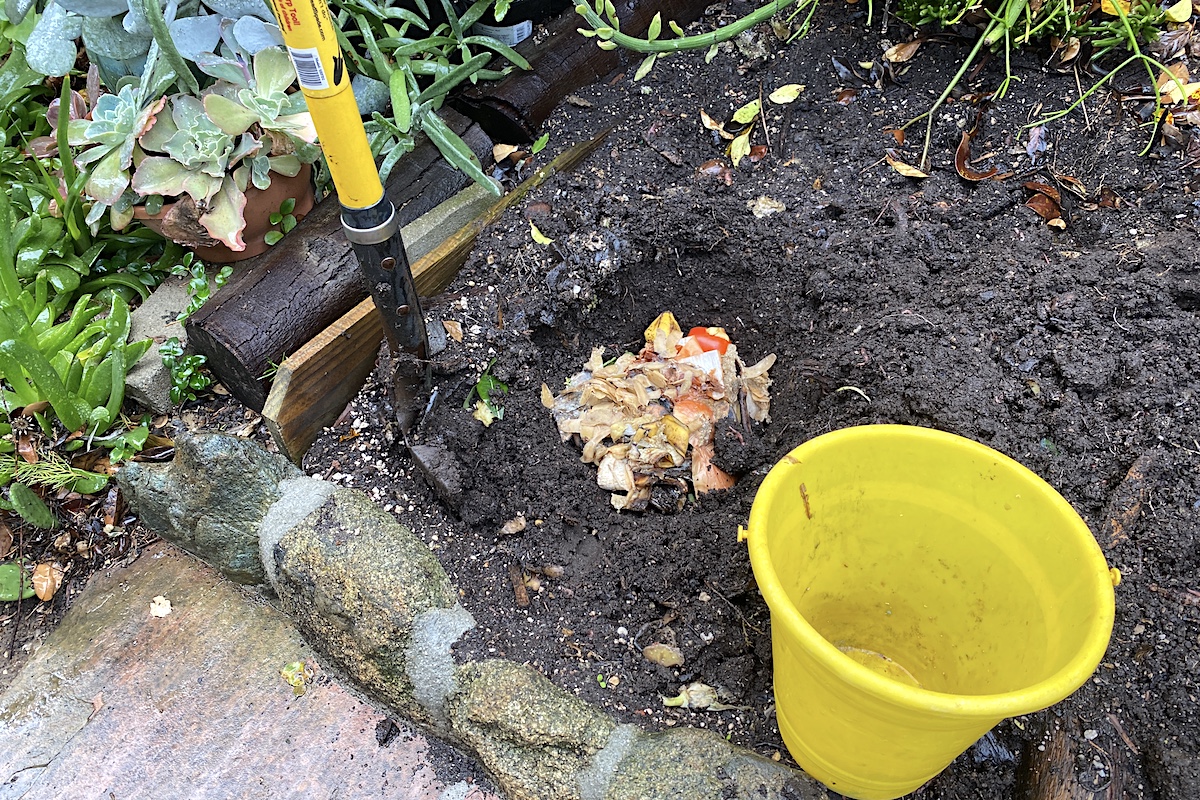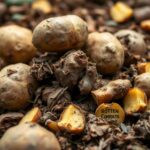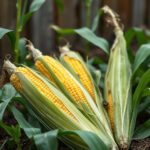Can I compost straight into the ground? Everything You Need to Know for Successful In-Ground Composting

Composting is an eco-friendly way to recycle organic waste and enrich your garden soil. While many people use compost bins or tumblers, in-ground composting offers a natural alternative that can integrate seamlessly into your landscape. But can you really compost straight into the ground? This method not only simplifies the composting process but also supports healthy soil ecology. In this article, we’ll explore everything you need to know about in-ground composting, including the benefits, techniques, and best practices to ensure your composting efforts lead to thriving plants and a sustainable garden. Get ready to dig in!
Can I Compost Straight into the Ground?
Yes, you can compost straight into the ground, a method often referred to as in-ground composting. This technique involves digging a hole or trench and adding organic materials such as kitchen scraps and yard waste directly into the soil. Over time, these materials break down through microbial activity, enriching the soil with essential nutrients that promote plant growth. In-ground composting is a practical approach for those with limited space or who prefer not to manage a traditional compost pile. However, it is important to balance the carbon and nitrogen content and avoid adding materials that may attract pests or create odors.
Benefits of In-Ground Composting
In-ground composting offers several benefits, including improved soil quality and reduced waste sent to landfills. As organic materials decompose beneath the surface, they enrich the surrounding soil, improving its fertility and structure. Additionally, this method helps retain moisture and can lower the need for synthetic fertilizers, promoting a healthier ecosystem in your garden. Furthermore, in-ground composting is often more discreet and requires less effort in maintaining a traditional compost bin, making it appealing for homeowners with limited outdoor space.
Materials Suitable for In-Ground Composting
When composting directly into the ground, it is essential to use appropriate materials. Suitable items include fruit and vegetable scraps, coffee grounds, eggshells, and grass clippings. These materials are rich in nitrogen, which is vital for microbial activity. However, avoid adding meat, dairy, and oily products, as they can attract pests and create odors. A well-balanced mix of green (nitrogen-rich) and brown (carbon-rich) materials is crucial for effective decomposition. Here is a table showcasing suitable materials and their categories:
| Material | Category |
|---|---|
| Fruit scraps | Green |
| Vegetable scraps | Green |
| Dry leaves | Brown |
| Straw | Brown |
| Grass clippings | Green |
How to Start In-Ground Composting
To start in-ground composting, select a suitable location in your garden, preferably a spot that is well-drained and receives some sunlight. Begin by digging a hole or trench that is at least 12 inches deep. As you add organic materials, layer them to create a healthy mix of greens and browns, ensuring a more effective breakdown process. It's helpful to occasionally turn the contents with a shovel to aerate the mixture. Over time, new nutrients will infiltrate the surrounding soil, resulting in healthier plants.
Common Challenges of In-Ground Composting
While in-ground composting can be very effective, there are some challenges to consider. One potential issue is the presence of pests, such as rodents or insects, which can be drawn to the organic matter. To mitigate this, avoid adding items that are particularly attractive to pests. Additionally, the decomposition process can be slower than in a traditional compost bin, making it necessary to be patient while waiting for the materials to break down. Ensuring a balanced mix of materials and proper aeration can also be challenging for those unfamiliar with composting practices.
How to Know When Compost is Ready
Determining if your in-ground compost is ready can be somewhat subjective, but there are key indicators to look for. The compost should have a dark, crumbly texture and an earthy smell, indicating successful decomposition. Additionally, you should see a significant reduction in the original materials used, and they should be unrecognizable. Conducting a simple test by digging up a sample and examining its appearance can help you assess its readiness. If it meets these criteria, it is likely well on its way to enriching your soil and promoting plant health.
Can I compost directly in the ground?


Composting directly in the ground, often referred to as in-ground composting, allows organic waste to decompose naturally and enrich the soil. This method can be a beneficial and eco-friendly way to recycle kitchen scraps and yard waste. However, it involves several considerations and may not be suitable for everyone.
What is In-Ground Composting?
In-ground composting is a technique where organic materials are buried directly into the soil, allowing them to decompose and improve soil health over time. This method can be practiced in various ways, including using pits, trenches, or buried compost bins.
- Composting pits: Dig a hole in your garden and add layers of organic waste, covering it with soil.
- Trench composting: Create a trench, fill it with kitchen scraps, and bury it, allowing for nutrient cycling.
- Buried compost bins: Use containers that are embedded in the ground to facilitate the composting process.
Benefits of Composting Directly in the Ground
Composting directly in the ground presents numerous advantages that can enhance gardening practices and soil health.
- Soil enrichment: As organic materials break down, they add valuable nutrients to the soil, improving its fertility.
- Reduced odors: Burying kitchen scraps reduces unpleasant smells that may occur when composting above ground.
- Attracting beneficial organisms: The decomposition process supports beneficial microbes and earthworms, enhancing soil structure.
Potential Challenges of In-Ground Composting
While in-ground composting has its benefits, there are also some challenges to consider before starting.
- Soil conditions: Heavy clay or sandy soils may not provide optimal conditions for decomposition.
- Animal interference: Buried scraps can attract animals seeking food, which may disturb your composting efforts.
- Slow decomposition rates: Depending on environmental factors, decomposition can take longer than traditional composting methods.
Best Practices for Successful In-Ground Composting
To ensure effective in-ground composting, following some best practices can lead to better results.
- Layering materials: Use a mix of green (nitrogen-rich) and brown (carbon-rich) materials for balanced compost.
- Chop ingredients: Cutting or shredding materials can enhance decomposition speed by increasing surface area.
- Monitor moisture levels: Keeping the compost moist, but not waterlogged, is crucial for microbial activity.
Is In-Ground Composting Suitable for Everyone?
In-ground composting may not be appropriate for all gardeners, depending on specific circumstances and preferences.
- Space availability: Limited garden space may restrict the use of in-ground composting methods.
- Location: In urban settings, regulations might prohibit burying organic waste.
- Pest control: If local wildlife is a concern, in-ground composting may not be the best option.
Can you put a compost pile directly on the ground?

Yes, you can put a compost pile directly on the ground. In fact, doing so is one of the simplest and most effective methods of composting. By placing a compost pile directly on the soil, you allow beneficial organisms such as earthworms, bacteria, and fungi to access the organic material, which aids in the decomposition process. This direct contact with the ground helps facilitate airflow, drainage, and nutrient exchange, creating an environment conducive to composting.
See also:
Benefits of Composting on the Ground
Composting directly on the ground provides several advantages:
- Nutrient Access: Microbes and organisms in the soil can easily access the compost pile, enhancing decomposition.
- Improved Airflow: The natural drainage and aeration of the soil allow for better airflow in the compost pile.
- Soil Enrichment: Over time, the compost enriches the soil underneath, improving its fertility.
Choosing the Right Location
When placing a compost pile on the ground, selecting an appropriate location is vital:
- Sunlight Exposure: A spot that receives partial sun helps maintain moisture and warmth in the compost.
- Accessibility: Ensure the location is easily accessible for adding materials and turning the pile.
- Drainage: Choose an area that doesn’t hold water, as excessive moisture can lead to anaerobic conditions.
Layering for Success
Proper layering in your compost pile is essential for effective decomposition:
- Green Materials: Layer in nitrogen-rich green materials like kitchen scraps and fresh grass clippings.
- Brown Materials: Alternate with carbon-rich brown materials such as dry leaves and straw.
- Optimal Balance: Aim for a balanced mix of about three parts brown to one part green materials.
Monitoring and Maintenance
Regularly monitoring and maintaining your compost pile ensures it decomposes effectively:
- Turning the Pile: Turn your compost every few weeks for better aeration and to speed up decomposition.
- Moisture Control: Keep the pile moist, akin to a damp sponge, but not overly wet or soggy.
- Temperature Checks: Monitor the temperature; an active pile should heat up to around 130-160°F (54-71°C).
Potential Challenges
While composting on the ground is beneficial, some challenges may arise:
- Rodent Attraction: A compost pile on the ground can attract pests; manage food scraps wisely.
- Drainage Issues: Poor drainage can lead to a soggy pile; choose your location carefully.
- Time to Decompose: Piles may take longer to decompose in colder climates; consider insulating the pile.
Questions from Our Readers
Can I compost straight into the ground?
Yes, you can compost straight into the ground by creating a compost pit or using a no-dig method. This involves layering organic materials directly onto the soil, allowing microorganisms to break them down naturally while enriching the soil over time.
What materials can I use for ground composting?
You can use a variety of organic materials for ground composting, including vegetable scraps, grass clippings, leaves, and small branches. It's important to balance green materials (rich in nitrogen) with brown materials (rich in carbon) to optimize the composting process.
How long does it take for compost to work in the ground?
The time it takes for compost to break down in the ground can vary, but typically, it may take several months to a year. Factors such as the type of materials used, moisture levels, and overall microbial activity will influence the speed of decomposition.
See also:
Are there any downsides to composting directly into the ground?
One downside to composting directly into the ground is the potential attraction of pests and rodents if the materials are not managed properly. Additionally, if not layered correctly, it could lead to uneven decomposition or unpleasant odors.

If you want to read more articles like Can I compost straight into the ground? Everything You Need to Know for Successful In-Ground Composting, we recommend you check out our Compost category.
Leave a Reply
Related Articles